LEOPARD SEAL FACTS
Leopard seals are marine mammals, which means they live in the ocean, breathe air, give birth to live young, nurse their young and are warm blooded. Other marine mammals include whales, dolphins, porpoises, manatees, seals, sea lions, sea otters and polar bears.
Leopard seals are part of the family of animals called ‘Pinnipeds’. This latin name translates to ‘fin or flipper-footed’, and refers to marine mammals which have front and rear flippers. This group includes seals, sealions and walruses. Millions of years ago, the ancestors of pinnipeds lived on land. These were probably weasel- or bear-like animals that spent more and more time in the ocean and eventually adapted to this marine environment.
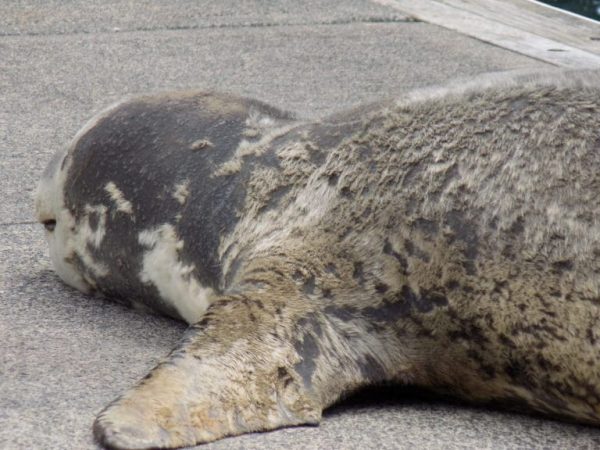
Leopard seals are the only species of seal belonging to the ‘Hydrurga’ genus. Their Latin name (Hydrurga leptonyx) literally translates to “slender-clawed water-worker”. Leopard seals were first described by French zoologist Henri Marie Ducrotay de Blainville back in 1820.
Leopard seals belong to a group of seals called Phocidae (the earless seals, or true seals) which means that they do not possess any external ear flaps like their cousins the Otariidae (or eared seals) such as the NZ sea lions and NZ fur seals. Instead, leopard seals have an internal ear canal with only a small external opening (a little hole visible either side of the head).
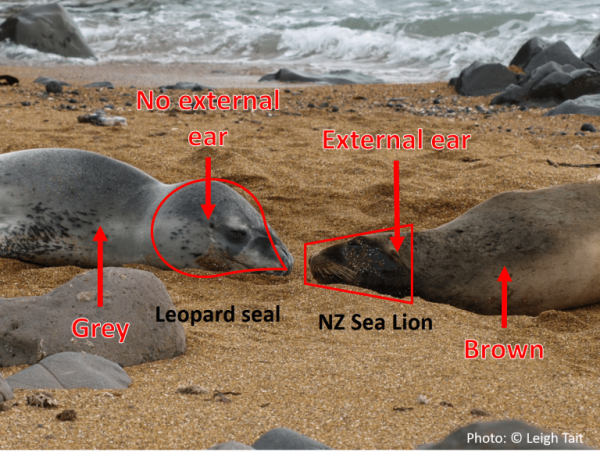
Related species
A leopard seal’s closest living relatives are its neighbours, the three other species of seal found in the waters around Antarctica. These are the Ross, crabeater and Weddell seals. Leopard seals are definitely the biggest and fastest of this bunch, and have been known to hunt and prey upon other species of seal.
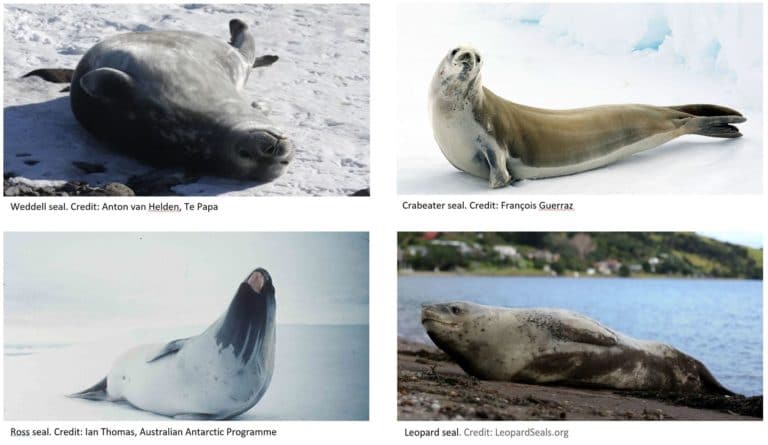
Māori names
Did you know that the Māori word for leopard seal varies across the country? According to the literature, they are referred to as ‘rāpoka’, ‘popoiangore’ or ‘poipoiangore’ in the North. In the South they are referred to as ‘popoikore’ or ‘rāpoka’.
The tricky part with the name ‘rāpoka’ is that New Zealand sea lions are referred to by the same name. Leopard seals are considered a taonga (treasure) for the people of the land.
Size
Weighing up to 600kg, leopard seals are the second largest seal species found in the Antarctic. Only the Southern Elephant seals grow larger, weighing up to (a very impressive) 4,000kg!
Southern Elephant Seals are mainly found around the Antarctic continent and the subantarctic islands, however, occasionally they can be found along the coastlines of mainland New Zealand.
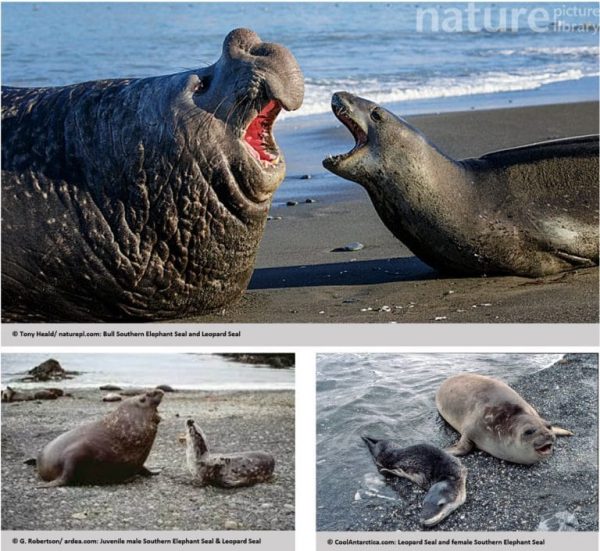
solitary LIFESTYLE
Leopard seals are non-gregarious, which means that they don’t live in groups. They prefer a solitary life, only coming together to mate or take advantage of a common food source (such as a large penguin colony). Mating usually occurs in the water between the months of November and March with the resulting pups being born approximately 274 days later.
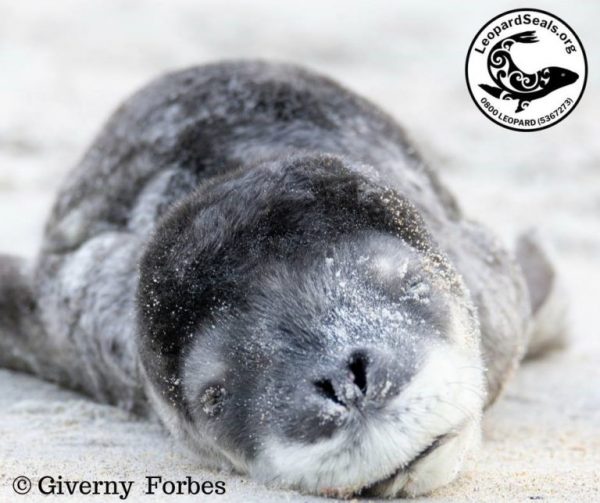
diving
Leopard seals can remain under the water for approximately 15 minutes during a dive. They have been recorded diving to depths of 304 meters! However, the majority of dives stay within 10m – 50m of the surface as leopard seals are predominantly feeding on prey found within this zone.
Click here to see a video from photographer Paul Nicklen where he shares his story of diving with a leopard seal female in Antarctic waters. Please note, some of the content shows dead penguins.
Vocalisation
Leopard seals are known to be very vocal (underwater) during the summer months. Males can produce at least five different, distinctive types of sound:
- High double trill
- Medium single trill
- Low descending trill
- Low double trill
- Hoots with single low trill.
These sounds are presumed to be a part of a “long-range acoustic display” for territorial purposes and/or to attract a mate. Females are known to vocalise when they have elevated reproductive hormones (helping them find a mate) and to get their pups attention when they return to the ice after a foraging trip.
Click here to listen to the sounds a leopard seal can make.
Feeding
Leopard seals are opportunistic feeders and will prey on anything ranging from krill, squid, fish, sea birds, penguins and even … other seals! Leopard seals on the other hand only have one real predator to worry about: the orca. Click here to view a video from BBC Earth showing how a leopard seal hunts for penguin.
Physical features
Leopard seals have a very unique set of teeth. Their molars are ‘trident’ shaped allowing them to ‘filter feed’ as they swim, trapping krill in their mouths as the sea water passes through. Their canine teeth can be as long as 2.5cm and are primarily used for grabbing and holding onto prey species such as penguins and fishes, while the other front teeth are used for tearing and cutting up larger prey items.

Leopard seals have very short, sensitive and clear whiskers. These help them sense movement in the water. Just as our hair can reveal a lot about our past, a leopard seal’s whiskers can tell us a lot about their past. Researchers are hoping to use leopard seal whiskers to help them analyse how a leopard seal’s diet has changed across years.
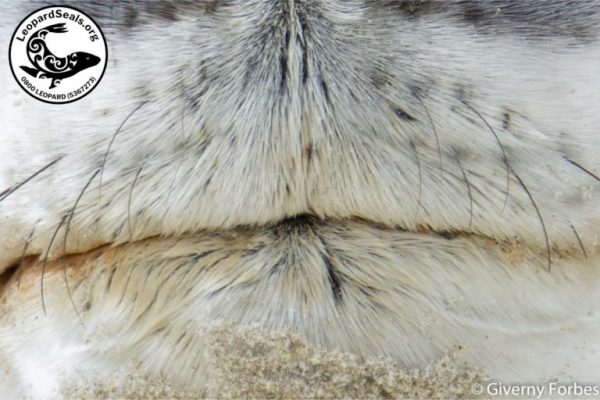
Leopard seals have developed some neat adaptations to help them cope with their environment. They have a thick layer of fat sitting just beneath their skin called blubber (similar to whales) which helps to insulate them from the cold temperatures in Antarctica and therefore keep their bodies warm.
When it comes to diving, they have more blood and myoglobin (this type of molecule is designed to store and transport oxygen in the muscles) than many other mammals. In conjunction with a reduced heart rate this allows them to stay under water for longer periods of time without the need to surface for air/a breath.
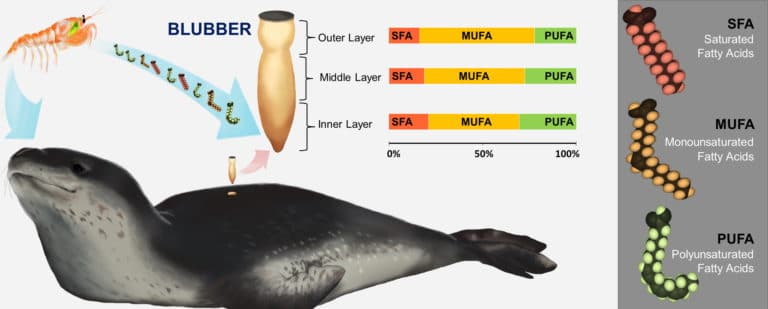
Leopard seals are generally very slim animals. When we see a leopard seal, we use a technique called body condition scoring (BCS) to estimate the condition of the animal. BCS is a subjective visual technique to assess the health of an animal, which was first developed in the 1960’s for farmers to assess the health of ewes and this method was subsequently picked up for cows as well.
We use this method for many wild species now as well, due to the inability to easily perform invasive analysis on these animals.
When we see a leopard seal, we look at the visibility of bony structures on the body and rate the “fatness” of those areas. This subsequently gives us an overall score for the entire body. Generally, if bony areas such as the ribs and spine aren’t showing, the animals are considered to be in good condition.
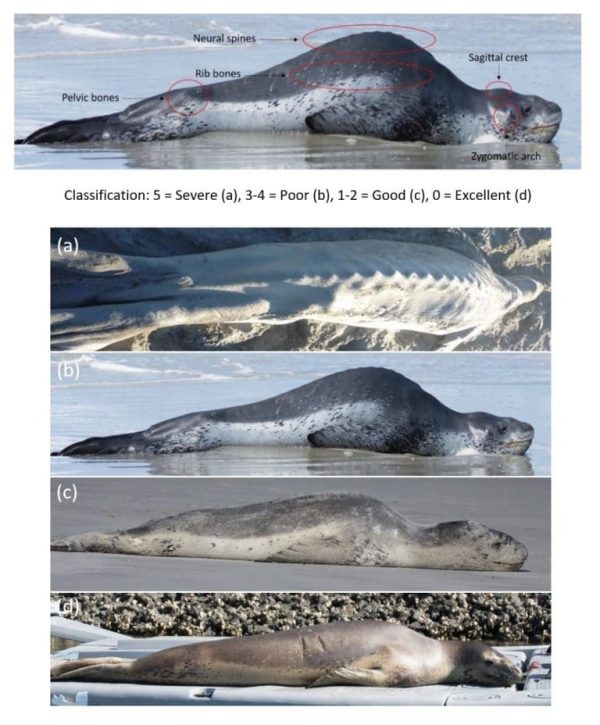
Distribution
During the winter months leopard seals are known to move northward, away from the Antarctic and towards warmer areas with less ice (such as the South Georgia Islands, the Falkland Islands, the Subantarctic Islands and even as far north as New Zealand and occasionally the southern coasts of Australia). They have been found as far north as the Cook Islands!
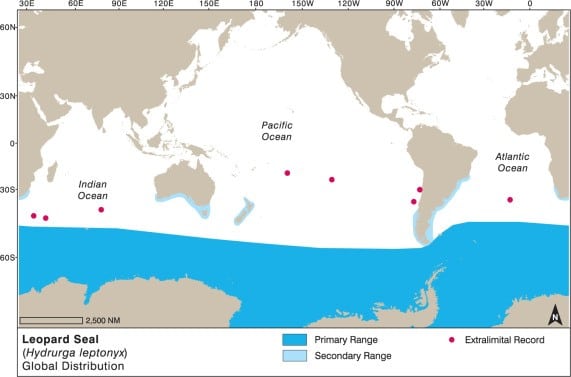
History
Leopard seals have been recorded in New Zealand since the 1860’s! We have photographic evidence that dates back to them being present in New Zealand in the early 1900’s. Some of these individuals were even subsequently held in captivity here in New Zealand.
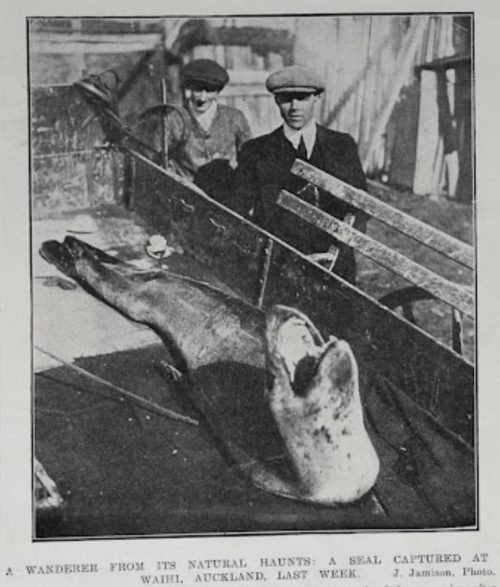
Protection
In Antarctica, leopard seals are protected by law under the ‘Antarctic Treaty’ and the ‘Convention for the Conservation of Antarctic Seals’.
In New Zealand, leopard seals are also protected by law under the ‘Marine Mammals Protection Act (MMPA) 1978’ – under which, it is an offence to disturb, harass, harm, injure or kill a seal. Anyone convicted of an offence under the ‘Marine Mammals Protection Act (1978)’ faces a maximum penalty of two year’s imprisonment or a fine up to a maximum of $250,000.

Global Population
The global population for leopard seals is estimated to be between 200,000 and 400,000 individuals. That is a pretty substantial range.
The International Union for Conservation of Nature (IUCN) estimates that there are approximately 18,000 mature individuals remaining in the population.
Calculating accurate global population figures for a species such as the leopard seal is incredibly difficult due to their expansive (and often remote) distribution.
Fortunately, historical ‘commercial’ sealing operations did not directly target leopard seals, and therefore these have had little impact on their numbers.
Currently the species is listed as being of ‘least concern’ on the IUCN ‘Red List’ – however population trends are unknown.